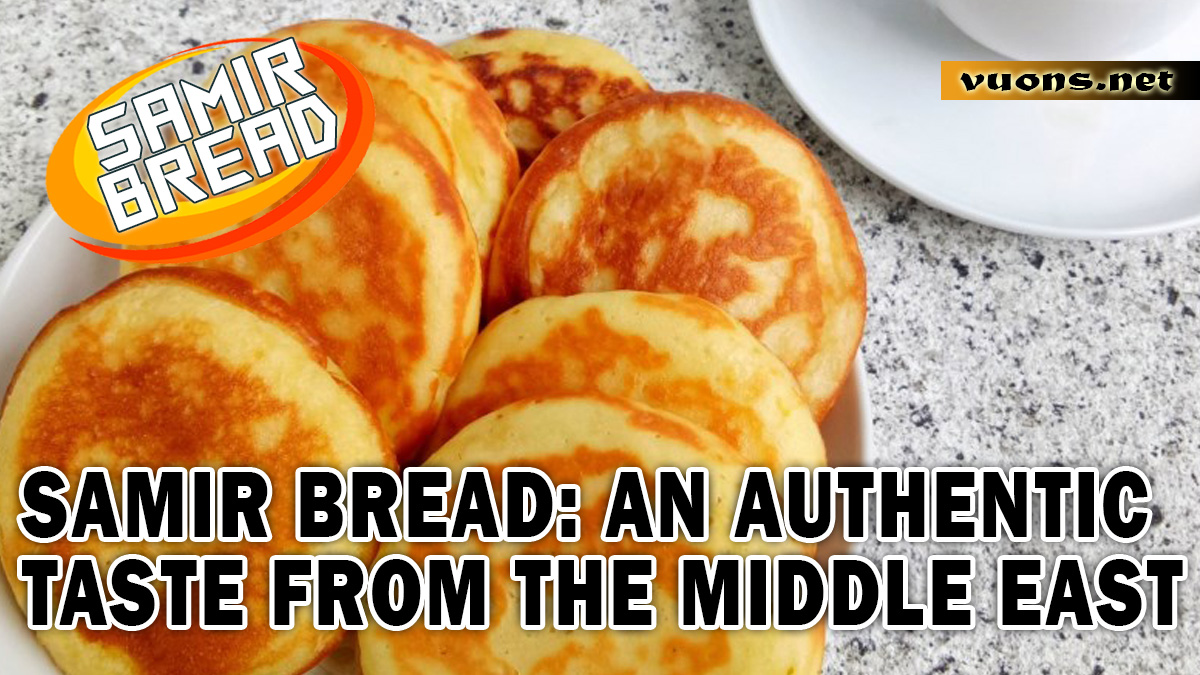Samir Bread: Authentic Flavors from the Middle East
History and Origin of Samir Bread
Samir Bread is a Delicious traditional dish from the Middle East, especially Iraq. This bread is known for its soft and slightly crunchy texture on the outside, which is obtained from the baking process in a tandoor oven. The distinctive taste of Samir Bread reflects the diversity of Middle Eastern culinary culture.
The history and origins of Samir Bread are rooted in the long culinary traditions of the Middle East, where this flatbread has become an integral part of the daily diet. Samir bread is usually made from simple ingredients such as wheat flour, yeast, water and salt. The manufacturing process, which involves roasting in a tandoor oven, gives it a distinctive aroma and attractive texture.
The tradition of making Samir Bread has been passed down from generation to generation, and the recipe often varies according to local customs. In the Middle East, Samir Bread is usually enjoyed with a variety of dishes, from meat stews to hummus and salads. Its deliciousness and ease make it a very popular dish in many households.
Samir Bread is not only a symbol of Middle Eastern cuisine but also reflects its rich culture and traditions. Every bite of this bread takes us on an authentic culinary experience, highlighting the rich traditions that have existed for centuries.
The Unique Taste and Texture of Samir Bread
Samir Bread is a charming traditional flatbread from the Middle East, especially Iraq. Known for its unique taste and texture, this bread has characteristics that differentiate it from other flatbreads. The specialty of Samir Bread lies in its simple but effective manufacturing process in creating an authentic taste.
The unique taste and texture of Samir Bread comes from the baking method in a tandoor oven which provides a soft texture on the inside with a crispy crust on the outside. Basic ingredients such as wheat flour, yeast and water are combined in the right way, producing bread that has a distinctive aroma and appetizing taste.
The tandoor baking process gives Samir Bread a slightly crispy outer layer, while the inside remains soft and tender. This combination creates a satisfying eating experience, both as an accompaniment to a main dish or as a light snack. Samir Bread is often enjoyed with a variety of Middle Eastern dishes such as hummus, kebabs, or meat stews, adding a dimension of flavor to each dish.
The uniqueness of Samir Bread lies not only in its taste and texture, but also in the cultural connection and tradition it brings. Every bite of this bread reflects a culinary heritage that has existed for centuries, making it a dish full of meaning and enjoyment at the dinner table.
Key Components in Making Samir bread
Samir bread is typical of the Middle East, especially Iraq, which captivates with its simplicity and unique taste. This bread has become an important part of the region’s culinary traditions, known for its soft, crunchy texture and distinctive taste.
Key components in making Samir bread include simple but essential basic ingredients. Wheat flour is the main ingredient that gives structure to bread. Yeast is used to help dough rise and achieve the desired texture. Water and salt are also important ingredients that function to bind and balance flavors.
One of the most important elements in making Samir Bread is the baking process in a tandoor oven. This oven produces a high temperature that provides a crisp, golden outer crust, while the inside remains soft and tender. This technique creates layers of distinctive texture, making Samir Bread so different from other flatbreads.
Apart from the basic ingredients, the right manufacturing technique also plays an important role in producing delicious Samir Bread The dough must be prepared carefully and baked the right way to achieve the perfect balance between a crispy crust and a soft interior.
Samir Bread is not just a dish, but also a reflection of the rich culinary traditions of the Middle East. With simple but effective key components, this bread remains a favorite on many dining tables.
The Role of Samir Bread in Middle Eastern Cuisine
Samir Bread is a typical Middle Eastern dish, especially from Iraq, which has an important role in the region’s culinary traditions. This flatbread is known for its soft inside and crispy outside texture, which makes it the perfect addition to a variety of Middle Eastern dishes.
The role of Samir Bread in Middle Eastern Cuisine is very significant because this bread is often the main accompaniment to various dishes. In Middle Eastern culture, bread is not just food, but also a symbol of warmth and friendliness. Samir Bread is often served with dishes such as hummus, kebabs and meat stews, providing a convenient and delicious way to enjoy dips and side dishes.
Apart from being an accompaniment, Samir Bread also functions as a basic ingredient in several typical Middle Eastern dishes. This bread is often used as a base for dishes such as shawarma or as a substitute for a spoon for eating various foods, making it very functional on the dinner table. Its presence adds dimension to the culinary experience by providing a texture and taste that blends with other dishes.
With its multifunctional role, Samir Bread has become an inseparable element in Middle Eastern cuisine. It is not just a food to enjoy, but also part of a culinary tradition that brings the warmth and flavors of the Middle East to the table every day.




